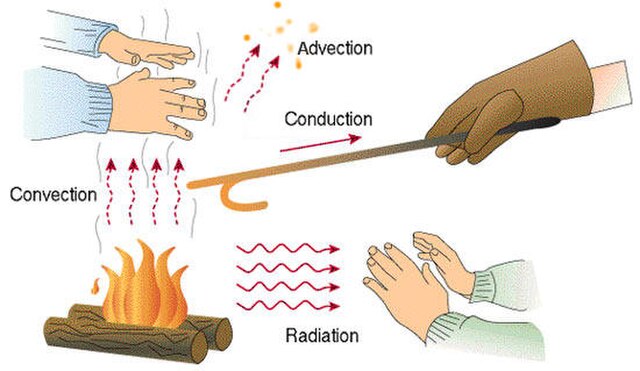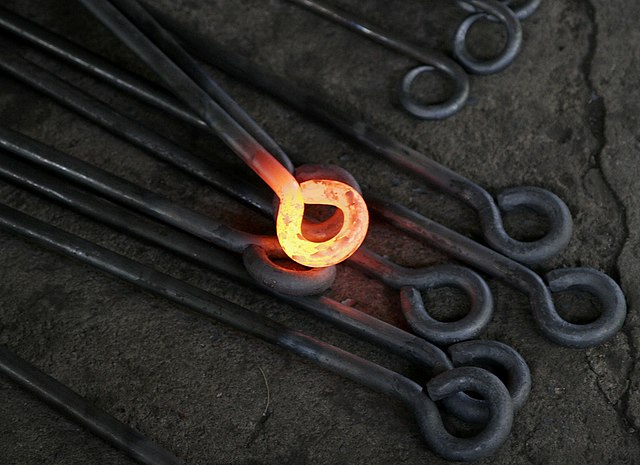In the study of heat transfer, radiative cooling is the process by which a body loses heat by thermal radiation. As Planck's law describes, every physical body spontaneously and continuously emits electromagnetic radiation.
Ice Pool beside the Meybod yakhchāl in Iran
Heat transfer is a discipline of thermal engineering that concerns the generation, use, conversion, and exchange of thermal energy (heat) between physical systems. Heat transfer is classified into various mechanisms, such as thermal conduction, thermal convection, thermal radiation, and transfer of energy by phase changes. Engineers also consider the transfer of mass of differing chemical species, either cold or hot, to achieve heat transfer. While these mechanisms have distinct characteristics, they often occur simultaneously in the same system.
The four fundamental modes of heat transfer illustrated with a campfire
Red-hot iron object, transferring heat to the surrounding environment through thermal radiation
Lightning is a highly visible form of energy transfer and is an example of plasma present at Earth's surface. Typically, lightning discharges 30,000 amperes at up to 100 million volts, and emits light, radio waves, X-rays and even gamma rays. Plasma temperatures in lightning can approach 28,000 kelvins (27,726.85 °C) (49,940.33 °F) and electron densities may exceed 1024 m−3.
Nucleate boiling of water.





